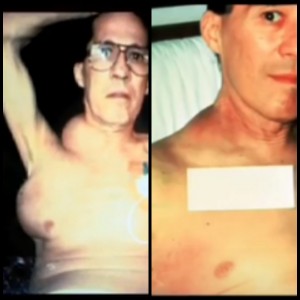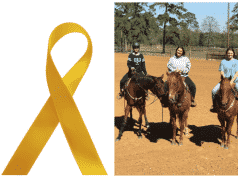5-year survival rates of melanoma patients treated at CHIPSA by diet therapy after the manner of Gerson: a retrospective review
 OBJECTIVE: Compare 5-year melanoma survival rates to rates in medical literature. DESIGN: Retrospective. SETTING: Hospital in Tijuana, Mexico. PATIENTS: White adult patients (N = 153) with superficial spreading and nodular melanoma, aged 25-72 years. INTERVENTION: Gerson’s diet therapy: lactovegetarian; low sodium, fat and (temporarily) protein; high potassium, fluid, and nutrients (hourly raw vegetable/fruit juices). Metabolism increased by thyroid; calorie supply limited to 2600-3200 calories per day. Coffee enemas as needed for pain and appetite. MAIN OUTCOME MEASURE: 5- year survival rates by stage at admission. RESULTS: Of 14 patients with stages I and II (localized) melanoma, 100% survived for 5 years, compared with 79% of 15,798 reported by Balch. Of 17 with stage IIIA (regionally metastasized) melanoma, 82% were alive at 5 years, in contrast to 39% of 103 from Fachklinik Hornheide. Of 33 with combined stages IIIA + IIIB (regionally metastasized) melanoma, 70% lived 5 years, compared with 41% of 134 from Fachklinik Hornheide. We propose a new stage division: IVA (distant lymph, skin, and subcutaneous tissue metastases), and IVB (visceral metastases). Of 18 with stage IVA melanoma, 39% were alive at 5 years, compared with only 6% of 194 from the Eastern Cooperative Oncology Group. Survival impact was not assessed for stage IVB. Male and female survival rates were identical for stages I-IIIB, but stage IVA women had a strong survival advantage. CONCLUSIONS: The 5-year survival rates reported here are considerably higher than those reported elsewhere. Stage IIIA/B males had exceptionally high survival rates compared with those reported by other centers.
OBJECTIVE: Compare 5-year melanoma survival rates to rates in medical literature. DESIGN: Retrospective. SETTING: Hospital in Tijuana, Mexico. PATIENTS: White adult patients (N = 153) with superficial spreading and nodular melanoma, aged 25-72 years. INTERVENTION: Gerson’s diet therapy: lactovegetarian; low sodium, fat and (temporarily) protein; high potassium, fluid, and nutrients (hourly raw vegetable/fruit juices). Metabolism increased by thyroid; calorie supply limited to 2600-3200 calories per day. Coffee enemas as needed for pain and appetite. MAIN OUTCOME MEASURE: 5- year survival rates by stage at admission. RESULTS: Of 14 patients with stages I and II (localized) melanoma, 100% survived for 5 years, compared with 79% of 15,798 reported by Balch. Of 17 with stage IIIA (regionally metastasized) melanoma, 82% were alive at 5 years, in contrast to 39% of 103 from Fachklinik Hornheide. Of 33 with combined stages IIIA + IIIB (regionally metastasized) melanoma, 70% lived 5 years, compared with 41% of 134 from Fachklinik Hornheide. We propose a new stage division: IVA (distant lymph, skin, and subcutaneous tissue metastases), and IVB (visceral metastases). Of 18 with stage IVA melanoma, 39% were alive at 5 years, compared with only 6% of 194 from the Eastern Cooperative Oncology Group. Survival impact was not assessed for stage IVB. Male and female survival rates were identical for stages I-IIIB, but stage IVA women had a strong survival advantage. CONCLUSIONS: The 5-year survival rates reported here are considerably higher than those reported elsewhere. Stage IIIA/B males had exceptionally high survival rates compared with those reported by other centers.
Objective: 5-year survival rates were computed for melanoma patients treated with a nutrition-based cancer therapy developed by Max Bernard Gerson, M.D. These were contrasted with 5-year rates appearing in the melanoma literature. Within the Gerson-treated sample, 5-year rates were compared for males vs females.
Design
Retrospective analysis was done on a case series of 153 melanoma patients admitted to the Gerson cancer management program from 1975 through July of 1990. Follow-up is ongoing.
Setting. The medical group of Centro Hospitalario Internacional del Pacifico, S.A. (CHIPSA) is consolidated from three previous smaller facilities, Hospital La Gloria, Hospital Jardines la Mesa, and Hospital Del Sol, all in the metropolitan area of Tijuana, Baja California, Mexico. Most patients in this study were hospitalized at one of the four facilities. A few patients were treated by independent physicians.
Patients: This study reports on 153 adult Caucasian superficial spreading and nodular melanoma patients, 83 (54%) males and 70 (46%) females, ranging in age from 25 to 72 years. 14 (9%) presented with local (stages I and II) disease, 35 (23%) with regional metastases (stage III), and 104 (68%) with distant metastases. Almost all patients were from the U.S., while several came from other English speaking countries.
Intervention: The diet therapy used in this study is a salt and water management, restricting sodium and supplementing potassium. It provides oral hyperalimentation of nutrients, while forcing fluids, by hourly administration of raw vegetable and fruit juices. Caloric utilization rates are enhanced through thyroid administration, while caloric content of the diet is limited (2,600 – 3,200 cal/day) by a very low fat, lactovegetarian diet. Protein is temporarily restricted. Coffee enemas are administered pro re nata (as frequently as every 4 hours) to improve nutrition, and to relieve pain.
Main Outcome Measured: 5-year survival rates by stage at admission.
The medical group of Centro Hospitalario Internacional del Pacifico, S.A. (CHIPSA) is consolidated from three previous smaller facilities, Hospital La Gloria, Hospital Jardines la Mesa, and Hospital Del Sol, all in the metropolitan area of Tijuana, Baja California, Mexico. Most patients in this study were hospitalized at one of the four facilities. A few patients were treated by independent physicians.
Results
 A 100% 5-year survival rate for stage I and II melanoma patients in the Gerson system (n = 14) compares favorably to the 79% 5-year rate found by Balch in a recent meta-analysis….
A 100% 5-year survival rate for stage I and II melanoma patients in the Gerson system (n = 14) compares favorably to the 79% 5-year rate found by Balch in a recent meta-analysis….
but due to extremely low early-stage recruitment, the sample is far too small
for statistical significance (2 = 2.56, P = 0.109). An 82% 5-year survival rate was achieved in stage IIIA melanoma patients (any T N1 M0) in the Gerson system (n = 17). Seen in contrast to a 39% 5-year rate published by the American Society for same-stage patients of the Fachklinik Hornheide (n = 103), those in the Gerson system benefited from a 110% greater (.43 difference in means) survival advantage (2 = 9.48 with 1 degree freedom, P = 0.002, Power = 0.887). Comparison of 5-year survival rates for all T4b, N1, and N2 (stages IIIA + IIIB) patients of the Fachklinik Hornheide (41%, n = 134) with those of CHIPSA (70%, n = 33) reveals a 71% greater (.29 difference in means) survival advantage (2 = 7.62 with 1 degree freedom, P = 0.006, Power = 0.802). Because the majority of Gerson-treated stage IV survivors had documentation of only lymphatic, skin, and subcutaneous metastases (no deep internal disease), they were categorized separately from those with visceral metastases. Analysis of stage IV is divided into IVA (metastases limited to skin, lymph, and subcutaneous tissue) and IVB (visceral metastases). In stage IVA (any T, any N, M1-only), Gerson patients achieved a 39% 5-year survival rate (n = 18) which is considerably higher (.33 difference in means) than the 6% 5-year rate (n = 194) of the Eastern Cooperative Oncology Group (2 = 19.3 with 1 degree freedom, P < 0.0001, Power = 0.997). The majority of IVB patients were suffering very advanced disease on admission to the Gerson program. Survival impact of Gerson’s cancer therapy in stage IVB melanoma was not assessed. Male and female survival rates are identical for local and regionally metastasized melanoma. With distant metastases of skin and lymph (stage IVA), women (n = 9) have a strong survival advantage over men (n = 9) at 5 years (Fisher Exact Test, P = 0.049).
Conclusion:
 Stage-related 5-year survival rates for adult, Caucasian melanoma patients who used Gerson’s therapy are considerably higher than rates reported elsewhere in the melanoma literature. Also, in contrast to the experience of other reporting centers, female and male survival rates were equal in regionally metastasized (stage III) melanoma. These outcomes suggest a possible direction for broader clinical investigations.
Stage-related 5-year survival rates for adult, Caucasian melanoma patients who used Gerson’s therapy are considerably higher than rates reported elsewhere in the melanoma literature. Also, in contrast to the experience of other reporting centers, female and male survival rates were equal in regionally metastasized (stage III) melanoma. These outcomes suggest a possible direction for broader clinical investigations.


























